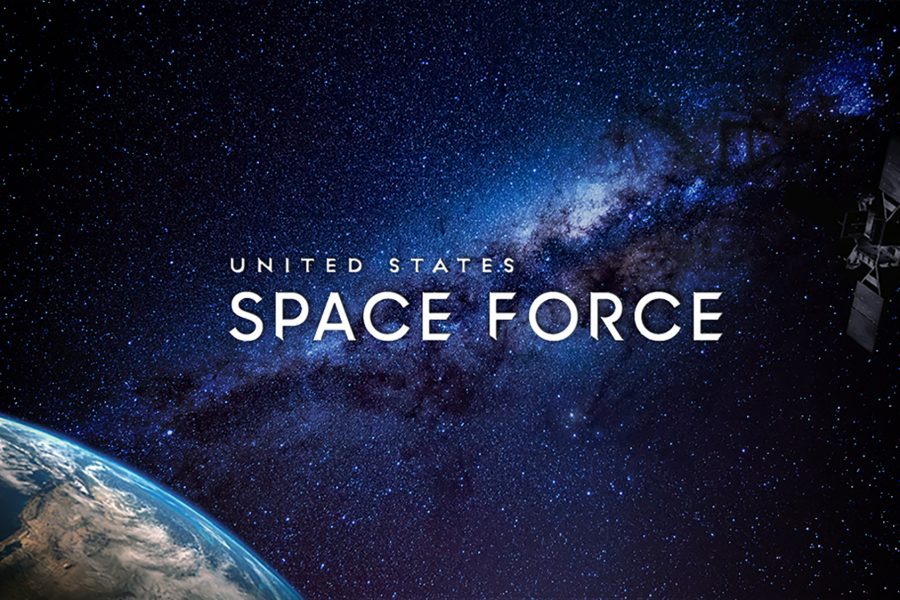The Space Force hasn’t yet turned 1 year old, but it’s already planning for what it wants to be in 30 years.
Charting that long-term vision will be a main focus of the newest service in its second year, Pentagon space policy boss Justin T. Johnson said during an Oct. 7 Heritage Foundation event.
Congress approved the creation of an armed force dedicated to space in December 2019. The Space Force is now breaking out from the Air Force to oversee personnel, equipment, and training for missions like rocket launches, GPS satellite operations, cybersecurity of space assets, ballistic missile tracking, and more. U.S. Space Command and the other global command organizations use these capabilities daily.
“They have a lot of work across all their lanes, organizing, training, and equipping,” said Johnson, who recently became acting deputy assistant secretary of defense for space policy. “Probably the biggest single thing that I know [Chief of Space Operations Gen. John W. “Jay” Raymond] is working on … [is] really fleshing out that long-term vision for the Space Force. What’s the force design, force development elements of the Space Force? What does that future vision in 10, 20, 30 years need to look like?”
Broadly, the Space Force is considering how to fend off other spacefaring nations that may try to harm U.S. satellites and other assets, while accompanying American companies and NASA into orbit, to the moon, and beyond. Service officials are making the argument that the Space Force must defend U.S. economic as well as military interests in the modern Space Age.
It must also make progress in its second year toward streamlining and deconflicting the multiple organizations that handle space acquisition, and maturing its various offices and commands.
Heading into the coming year, Vice Chief of Space Operations Gen. David D. Thompson is focused on building out Space Force headquarters at the Pentagon and its staffs that will handle operations, analysis, and future planning.
A Space Force press release said the service is ready to transition its headquarters work from the former Air Force Space Command hub at Peterson Air Force Base, Colo., to the Pentagon.
Thompson will also oversee the creation of the Space Warfighting Integration Center (SWIC), the Space Force equivalent of the Air Force Warfighting Integration Capability group that explores what resources the service might need in the coming decades. The SWIC may directly report to the Chief of Space Operations, pending congressional approval in fiscal 2022.
“We have conceived of SWIC as a key feature of force design and integration, not just internally, but with the rest of the force,” Thompson said in the release. “What we now need to do is the hard work of defining exactly what it’s going to do, exactly what its resources need to be, and exactly what its interfaces are going to be within the Space Force and the joint force.”
Raymond and Thompson’s decisions will shape how the rest of the Pentagon builds the Space Force into future strategy and adapts high-level policy to match the service’s needs.
“How we talk about things, what we’re deciding to defend, there’s a lot of work to do in the space posture around that, but it really goes back to Gen. Raymond and his team … laying out the really compelling vision for the future of the Space Force,” Johnson said.
In the coming year, the Space Force will also take an important step forward in starting to bring in personnel from the Departments of the Army and Navy for the first time. Top Pentagon officials are still hashing out who will move over, though it’s unclear when exactly DOD will finalize that decision. All told, the service plans to encompass about 15,000 employees—the smallest military branch by far.
“I think the vision is clear and consistent that we do want the Space Force to be the absolute center of gravity for space. There’s some work to do, and that takes time,” Johnson said.
Leaders worry that a misstep in the reorganization of military space could interfere with the systems and capabilities service members need to do their jobs each day, like navigation and communications.
“We don’t want to drop any balls,” Johnson said. “There’ll be missteps and small mistakes along the way, but I think we’re moving at speed, and Gen. Raymond is the right guy to get it done.”
Earlier this month, Thompson reiterated that DOD is “getting close” to nailing down which Army and Navy functions will join the Space Force. That decision should come by the end of December so the Space Force can plan into the next year for transfers to join in fiscal 2022, he said in a conversation hosted by Defense One.
It’s taken several months to first identify 23 parts of the Air Force, and now additional organizations elsewhere in the Defense Department, that will relocate. A few more units, such as intelligence workers, that weren’t in the initial pool marked for transfer will now join the Space Force. The Space Force will continue to share much of the services offered by the Air Force, such as base security personnel.
“There is a tremendous amount that the Space Force and the Air Force and the Army and the Navy, and working together with [the Office of the Secretary of Defense] have already agreed on,” Thompson said, including which space-related personnel and resources will stay where they are, and which are ready to transfer.
“There’s a few units and functions left that we haven’t reached full agreement on, and we’re in the process of finalizing the data and the information that will allow the decision-makers to decide,” he added.
Editor’s Note: This story was updated Nov. 11 to correct which units will join the Space Force.

